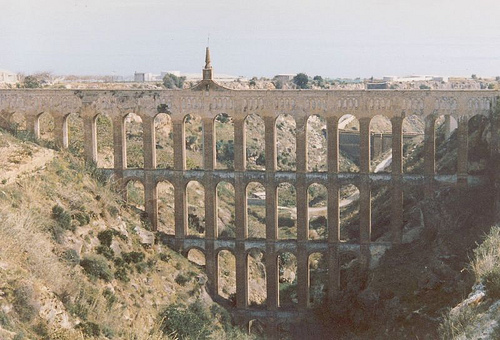The History of Water Leak Detection
Water leak detection is vital to the success of modern water supply systems, and the technology available for performing the task ranges from infrared imaging to amplified listening devices. It wasn’t always possible to detect leaks this way, however, and the methods of finding water leaks have evolved over the centuries alongside the methods of supplying and purifying water for domestic uses. Methods currently in used to detect leaks include:
- Pressure and flow monitoring
- Internal closed-circuit camera inspections
- Acoustic pressure waves
- Infrared radiometric pipeline testing
- Ground penetrating radar
- Acoustic emission detectors
- Vapor-sensing tubes
- Fiber-optic leak detection
- Statistical calculation methods
Ancient Roman Water Systems
The earliest documented water supply system was that of ancient Rome, which made use of a system of 13 aqueducts. Leaks were a pressing problem for Sextus Julius Frontenus, the Roman Water Commissioner at the end of the first century. In his two-page report “De aquaeductu” given to the emperor at the time, Frontenus highlighted the problem of the aqueducts of Appia and Old Anio, which had become “leaky by reason of age” and from water being diverted unlawfully by individuals. At the time, the only form of water leak detection was by examining pipes suspected of being tapped, because theft by water-men was considered a major crime.
Visual Inspection Method
Throughout the ages, the only method of detecting water leaks was by visual inspection. Water bursts are obvious and easy to find, but background losses often begin as pin-point sized leaks which remain undetectable until they become large enough to draw attention. All that changed with the invention of infrared thermal imaging by astronomer William Herschel in 1800, which was initially used for military purposes.
Thermal Imaging for Water Leak Detection
Infrared imaging was adapted during the 1950s and 1960s to produce line images. During the 1970s, it was first used for discovering and fighting fires on ships, based on its ability to identify differences in temperature. The invention of digital technology made it possible to take photos of a section of wall or roof and then use infrared to locate isothermic images on the photographs. This enables the identification of water leaks without the use of expensive, bulky equipment. Finally, onsite building inspections to detect leaks was possible.
Camera Inspections
With the evolution of film and digital technology came the ability to insert closed circuit cameras into pipes and other areas to film the condition of the infrastructure. Images are displayed on a monitor and recorded, and the application of infrared technology enables the viewer to detect the source and progress of water leaks on the spot. This ability, coupled with new developments in trenchless technology, makes it possible to repair leaks without the need to excavate around the damaged area.
Acoustic Water Leak Detection
Another modern method of detecting water leaks is through the use of acoustic devices. In 1879, Professor A. M. Mayer invented the “topophone,” a device that helped the wearer to identify the source of any sound. The principle behind these devices was adapted to a range of different purposes over the years. They are now used to detect the sound of escaping water, which creates an acoustic signal as it passes through holes and cracks in the pipes. This method relies on having a baseline acoustic fingerprint taken when the pipe is undamaged. Another method of listening for leaks is through the use of a ground geo-phone, which picks up and amplifies the sound when positioned over the leak.
Ground Penetrating Radar
This form of water leak detection uses radar pulses to image the subsurface of the ground using electromagnetic radiation. When it senses the presence of water, the data is produced as a profile, as a map showing the specific location of the water or as a three-dimensional image. While radar was invented in the 1930s, it was originally classified and used only for military purposes. Since the invention of ground penetrating radar in the 1970s, city officials became interested in the potential offered by the technology for use in mapping pipes and utility lines under city streets.
The detection of water leaks has come a long way since the days of Frontenus, and is now coupled with the capability to repair identified leaks as quickly and efficiently as they are discovered.
Photo credit: Nick Sarebi



